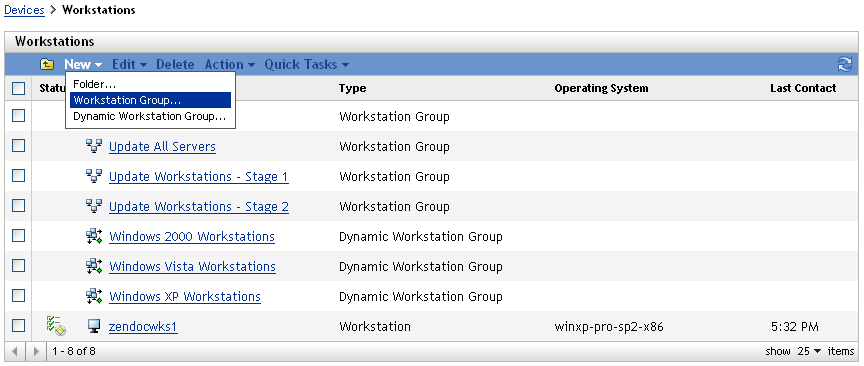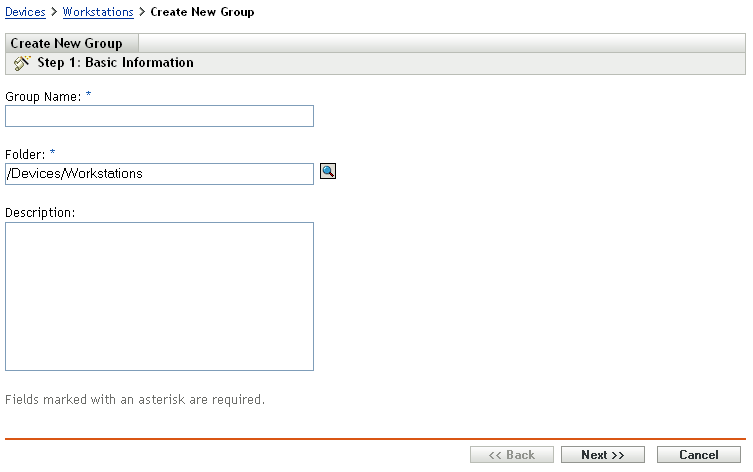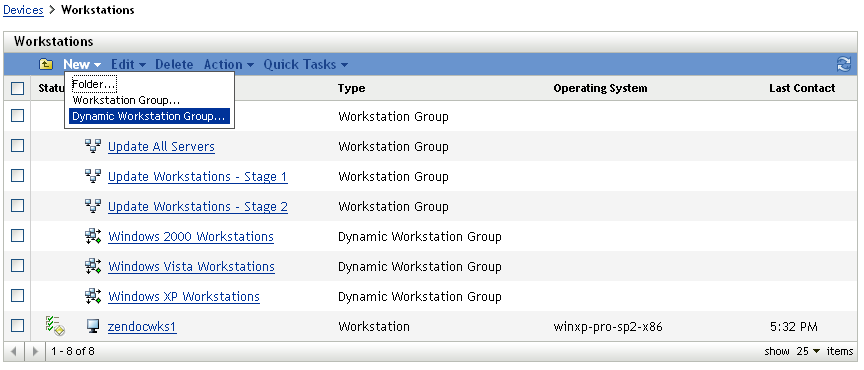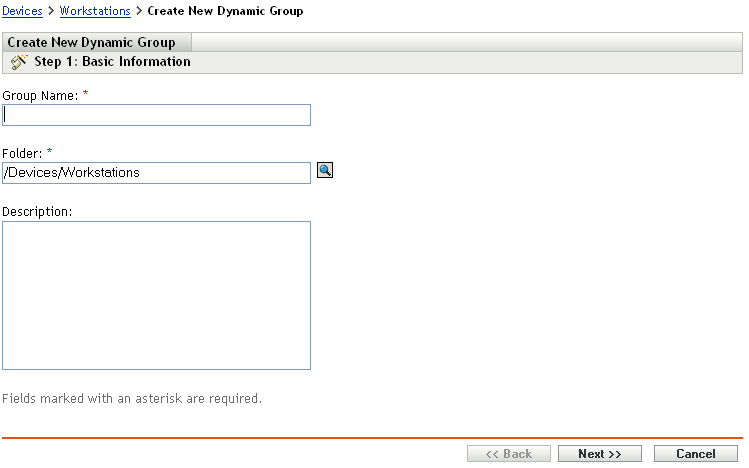7.2 Groups
As you can with folders, you can also assign content and perform tasks on device groups. When you do so, the group’s devices inherit those assignments and tasks. Unlike with folders, you cannot apply configuration settings to groups.
Groups provide an additional layer of flexibility for content assignments and tasks. In some cases, you might not want to assign the same content to and perform the same task on all devices in a folder. Or, you might want to assign the same content to and perform tasks on one or more devices in different folders. To do so, you can add the devices to a group (regardless of which folders contain the devices) and then assign the content to and perform the tasks on the group.
For example, let’s revisit the example of the workstations at three different sites (see Section 7.1, Folders). Assume that some of the workstations at each site need the same accounting software. Because groups can be assigned software, you could create an Accounting group, add the target workstations to the group, and then assign the appropriate accounting software to the group. Likewise, you could use the groups to assign Windows configuration and security policies.
The advantage to making an assignment to a group is that all devices contained in that group receive the assignment, but you only need to make the assignment one time. In addition, a device can belong to any number of unique groups, and the assignments from multiple groups are additive. For example, if you assign a device to group A and B, it inherits the software assigned to both groups.
ZENworks provides both groups and dynamic groups. From the perspective of content assignments or performing tasks, groups and dynamic groups function exactly the same. The only difference between the two types of groups is the way that devices are added to the group. With a group, you must manually add devices. With a dynamic group, you define criteria that a device must meet to be a member of the group, and then devices that meet the criteria are automatically added.
ZENworks includes several predefined dynamic server groups for example, Windows 2000 Servers Windows 2003 Servers and SUSE Linux Enterprise Server.
ZENworks also includes dynamic workstation groups for example, Windows XP Workstation, Windows 2000 Workstation, Windows Vista Workstations and SUSE Linux Enterprise Desktop. Devices that have these operating systems are automatically added to the appropriate dynamic group.
Creating a Group
-
In ZENworks Control Center, click the tab.
-
If you want to create a group for servers, click the folder.
or
If you want to create a group for workstations, click the folder.

-
Click > (or > for workstations) to launch the Create New Group Wizard.

-
On the Basic Information page, type a name for the new group in the field, then click .
The group name must follow the naming conventions.
-
On the Summary page, click to create the group without adding members.
or
Click if you want to add members to the group, then continue with Step 6.
-
On the Add Group Members page, click to add devices to the group, then click when finished adding devices.
-
On the Summary page, click to create the group.
You can also use the workstation-group-create and server-group-create commands in the zman utility to create device groups. For more information, see Workstation Commands
and Server Commands
in the ZENworks 11 Command Line Utilities Reference.
Creating a Dynamic Group
-
In ZENworks Control Center, click the tab.
-
If you want to create a group for servers, click the folder.
or
If you want to create a group for workstations, click the folder.

-
Click > (or > for workstations) to launch the Create New Group Wizard.

-
On the Basic Information page, type a name for the new group in the field, then click .
The group name must follow the naming conventions.
-
On the Define Filter for Group Members page, define the criteria that a device must meet to become a member of the group, then click .
Click the button for details about creating the criteria.
-
On the Summary page, click to create the group.